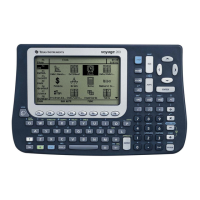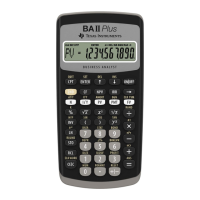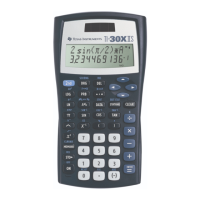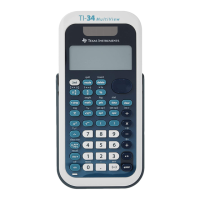Constants and Measurement Units 280
Using Parentheses with Units in a Calculation
Using Parentheses with Units in a CalculationUsing Parentheses with Units in a Calculation
Using Parentheses with Units in a Calculation
In a calculation, you may need to use parentheses ( ) to group a value and its units so
that they are evaluated properly. This is particularly true for division problems. For
example:
Note: If you have any doubt about how a value and its units will be evaluated, group
them within parentheses ( ).
Here’s why you get unexpected units if you do not use parentheses. In a calculation, a
unit is treated similar to a variable. For example:
100_m is treated as 100†_m and 2_s is
treated as
2†_s. Without parentheses, the entry is calculated as:
100†_m / 2†_s = †_s = 50. †_m †_s.
To calculate: Enter:
100_m
2_s
-----------------
100_m/(2_s) 50 •
_m
_s
-------
You must use parentheses
for (2_s). This is important
for division.
100_m/2_s 50. †_m †_s
If you omit the parentheses,
you will get unexpected units.
For example:
100
*
_m
2
--------------------

